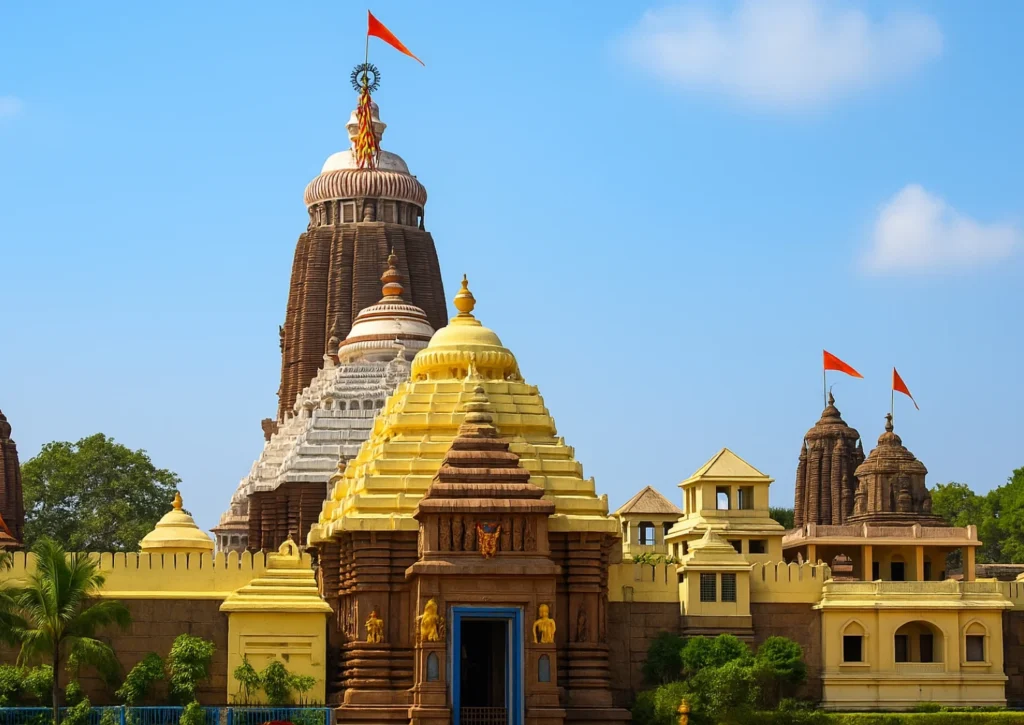Jagannath Yatra, also known as Rath Yatra, is one of the most significant and grand festivals celebrated in India. This sacred procession is dedicated to Lord Jagannath, an incarnation of Lord Vishnu, and takes place annually in Puri, Odisha. Millions of devotees from across the world gather to witness this divine event, which is deeply rooted in spiritual, cultural, and historical traditions. The Yatra symbolizes the journey of Lord Jagannath, along with his siblings, Lord Balabhadra and Goddess Subhadra, to their summer retreat at the Gundicha Temple. Let’s explore the history, significance, rituals, and vibrant celebrations of this magnificent festival.
The History and Significance of Jagannath Yatra
The origins of Jagannath Yatra date back thousands of years, with references in ancient scriptures like the Skanda Purana and Brahma Purana. The festival is closely associated with the Jagannath Temple in Puri, one of the Char Dham pilgrimage sites in Hinduism. According to legend, King Indradyumna, a devout worshipper of Lord Vishnu, established the temple and installed the sacred wooden idols of Lord Jagannath, Balabhadra, and Subhadra.
Jagannath Yatra is a representation of Lord Krishna’s visit to his aunt’s house in Mathura, highlighting the importance of familial bonds and devotion. It also signifies the cycle of life, death, and rebirth, as the deities undergo a ritual of renewal known as Nabakalebara every twelve to nineteen years, where their wooden idols are replaced with new ones carved from sacred neem trees.
Rituals and Preparations for the Yatra
The preparations for the grand Jagannath Yatra begin weeks in advance. The key rituals leading up to the festival include:
- Snana Purnima: The deities are bathed in 108 pots of sacred water, after which they are believed to fall ill and are kept in seclusion for 15 days, known as ‘Anavasara’.
- Netrotsava: A special ceremony where the eyes of the deities are painted before they reappear to the devotees.
- Chariot Construction: The three grand chariots for Lord Jagannath, Balabhadra, and Subhadra are meticulously built by skilled artisans using traditional techniques and sacred wood from specified trees.
The Grand Procession: Rath Yatra Begins
On the auspicious day of the Rath Yatra, the festival commences with an elaborate ritual called Pahandi, where the deities are carried out from the sanctum of the Jagannath Temple to their respective chariots. The three massive chariots are uniquely designed:
- Nandighosa (Jagannath’s chariot): 45 feet high with 16 wheels, decorated in red and yellow.
- Taladhwaja (Balabhadra’s chariot): 44 feet high with 14 wheels, decorated in red and green.
- Darpadalana (Subhadra’s chariot): 43 feet high with 12 wheels, adorned in red and black.
The most awaited moment of the Yatra is the Chhera Pahanra, a ceremonial ritual where the Gajapati King of Puri sweeps the chariots with a golden broom, symbolizing humility and devotion. Following this, thousands of devotees pull the chariots through the streets of Puri, chanting hymns and singing devotional songs. The entire city echoes with spiritual fervor as people seek the divine blessings of Lord Jagannath.
The Stay at Gundicha Temple and Return Journey
The deities remain at the Gundicha Temple for seven days, receiving special prayers and offerings. This period is known as the Gundicha Yatra, which is believed to be a time of divine rejuvenation. After their stay, the return journey, known as Bahuda Yatra, takes place, where the deities are brought back to the Jagannath Temple in the same grand procession. On their way back, the chariots halt at the Mausi Maa Temple, where the deities are offered ‘Poda Pitha’, a special rice cake considered Lord Jagannath’s favorite.
Jagannath Yatra: A Global Celebration
Though the Puri Rath Yatra is the most prominent, the celebration of Jagannath Yatra has transcended borders. Several cities in India and around the world, including Ahmedabad, Kolkata, London, and New York, organize Rath Yatras, bringing together devotees from diverse cultures and backgrounds. The International Society for Krishna Consciousness (ISKCON) plays a significant role in promoting the festival globally, spreading the essence of Lord Jagannath’s divine love.
Jagannath Yatra is more than just a festival; it is a spiritual journey that embodies devotion, inclusivity, and cultural richness. The sight of the massive chariots rolling through the streets of Puri, the rhythmic chanting of hymns, and the overwhelming energy of the devotees create an experience that is truly divine. Whether you witness the Yatra in Puri or any part of the world, the essence of Lord Jagannath’s blessings transcends all barriers, uniting hearts in devotion and faith. If you ever get the chance to be part of this grand celebration, it will surely be an unforgettable experience of spirituality and tradition.
–
*This blog is written by Team Curating Experience.


